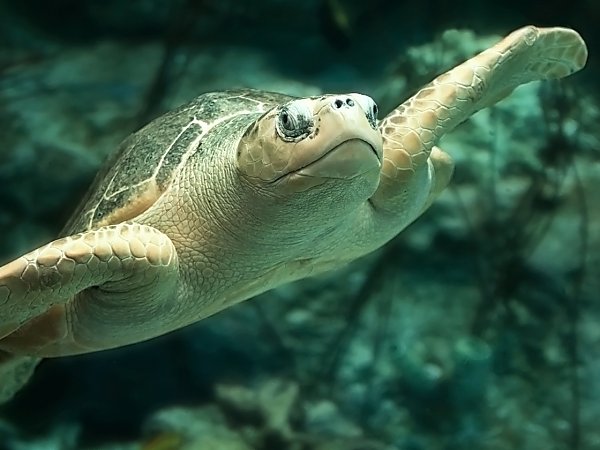
Gliding through tropical and subtropical waters, the Olive Ridley sea turtle is one of the most fascinating yet lesser-known marine reptiles. Named for its distinctive olive-green shell, this species is renowned for its unique mass nesting events, called arribadas, where thousands of females come ashore simultaneously to lay eggs. Despite being the most abundant sea turtle species, olive Ridleys face numerous threats, including habitat destruction, bycatch in fishing gear, and poaching. In this blog, we’ll explore what makes these turtles so special, the challenges they encounter, and what we can do to protect them for future generations.
Appearance
Olive ridley sea turtles are the smallest and most abundant of all sea turtles, typically growing up to 80 cm (2 to 2.5 feet) in length and weighing between 35 to 50 kg (77 to 100 pounds). Their name comes from their heart-shaped, olive-green carapace, which is smooth and nearly circular. The carapace is bony, lacking ridges, and features five to nine pairs of costal scutes. Olive ridleys have relatively small heads, and each of their four flippers bears one or two visible claws. Juveniles are charcoal gray, while hatchlings appear black when wet with greenish sides.
While generally similar in appearance to Kemp’s ridley sea turtles, olive ridleys tend to be darker in color, with adults exhibiting a deeper gray-green hue. The size and shape of olive ridleys vary by region, with the largest individuals observed in West Africa. Indian Ocean populations are generally smaller than those in the Pacific and Atlantic.
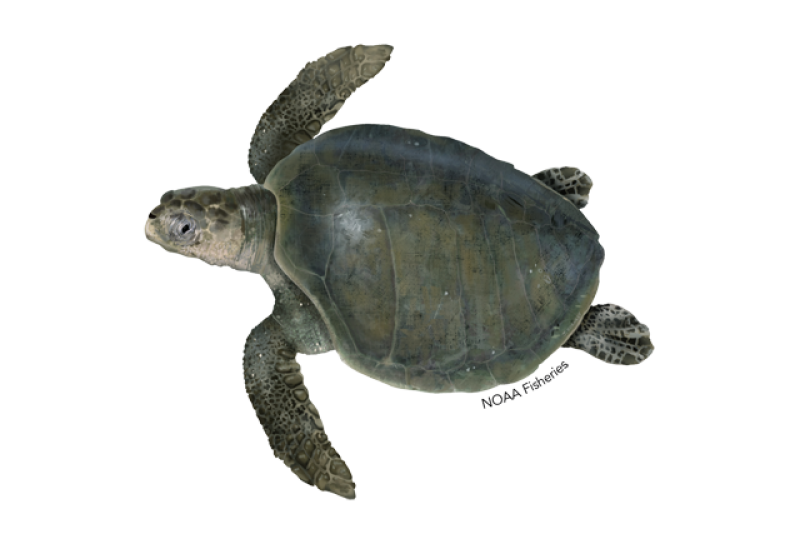
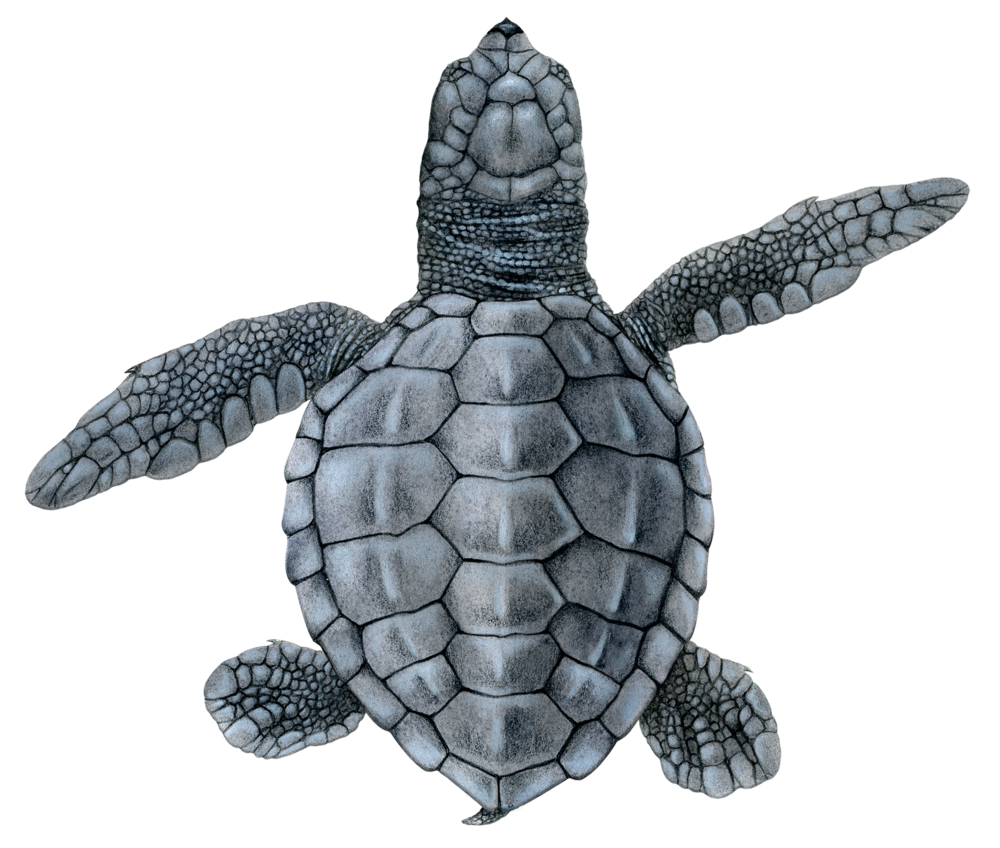

Behavior
Olive ridley sea turtles are highly migratory creatures, traveling thousands of kilometers between nesting and foraging grounds. Their behavior is remarkably adaptable, allowing them to thrive in both coastal and open ocean environments. Some individuals remain near the shore, feeding on shallow-water invertebrates, while others become nomadic oceanic migrants, foraging for surface-dwelling prey. These turtles are also excellent divers, capable of reaching depths of over 100 meters (328 feet) in search of food. Trawlers off the east coast of Australia have reported catching them at depths ranging from 11 to 40 meters (36 to 131 feet), highlighting their ability to exploit different habitats.
In cooler waters, olive ridleys have been observed basking in the sun at the surface, likely to regulate their body temperature, a behavior that is less commonly seen in warmer waters. Hatchlings and juveniles are typically found in surface waters of the open ocean, while adults can be seen in both deep offshore waters and coastal regions, particularly in the eastern Pacific. This behavioral flexibility is one of the key factors in their widespread distribution, allowing them to navigate and survive in a variety of marine environments.
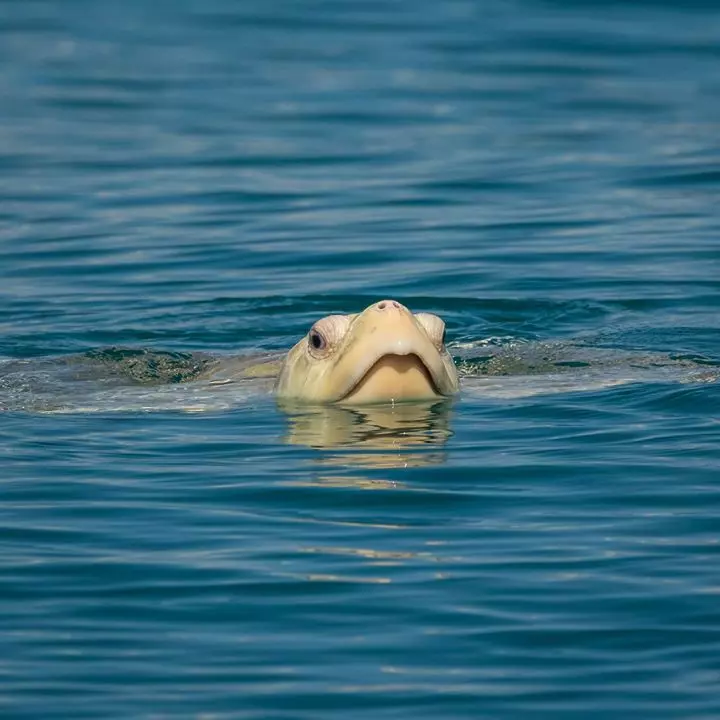
Diet
Olive ridley sea turtles are primarily carnivorous, especially in their immature stages, but they are considered omnivorous due to their ability to consume a wide variety of food sources. Their diet mainly consists of invertebrates such as jellyfish, tunicates, snails, crabs, shrimp, sea urchins, bryozoans, bivalves, and rock lobsters. They are skilled divers, capable of reaching depths of up to 500 feet (150 meters) to forage for bottom-dwelling prey. In estuarine and shallow marine waters, they actively hunt protochordates and other invertebrates, while in open ocean environments, they have been observed feeding on fish, fish eggs, and jellyfish. Although they predominantly consume animal prey, olive ridleys will occasionally eat algae and seaweed, particularly in areas where other food sources are scarce.
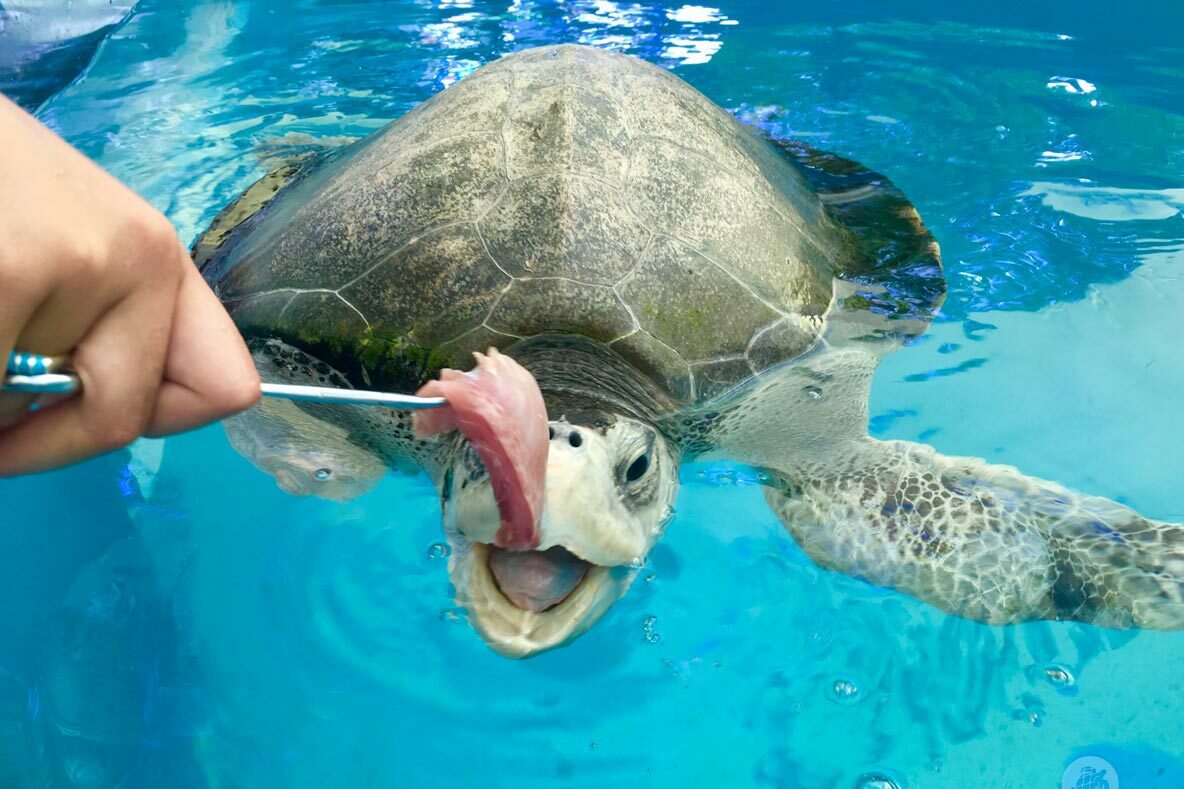
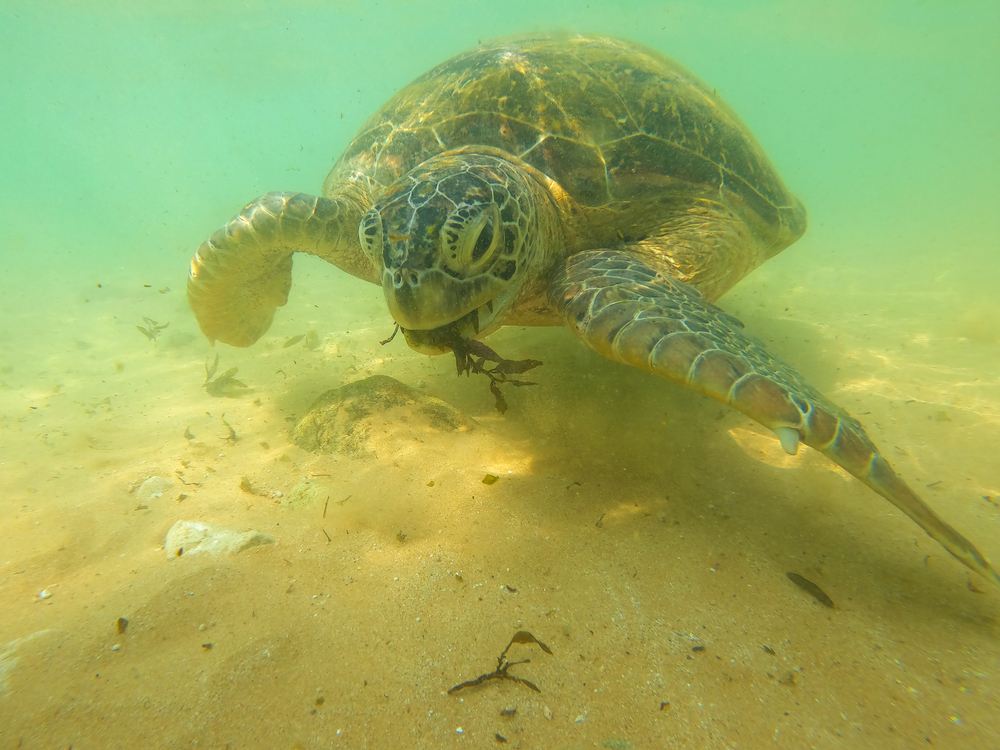
Range/Distribution
Olive ridley sea turtles have a vast global distribution, primarily inhabiting tropical and subtropical waters of the Atlantic, Pacific, and Indian Oceans. While they are mainly a pelagic species, often observed thousands of miles from shore, they are also known to frequent coastal areas, including bays and estuaries. In the Atlantic Ocean, they are found along the coasts of West Africa and South America, while in the Eastern Pacific, their range extends from Southern California to Northern Chile. Olive ridleys are known to inhabit the coastal waters of at least 80 countries, making them one of the most widespread sea turtle species.
Although olive ridleys do not typically migrate between ocean basins, they move between oceanic and neritic (coastal) zones, especially near nesting sites. Their abundance is largely attributed to their unique mass nesting events, known as “arribadas,” which occur in countries such as Mexico, India, Nicaragua, and Costa Rica.
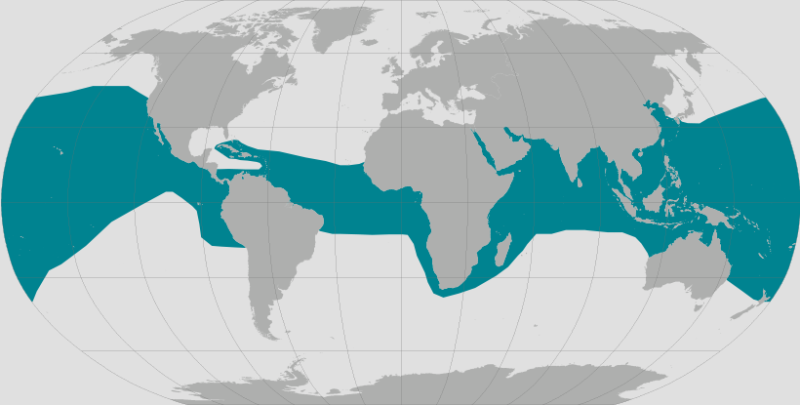
Lifespan/Reproduction
Olive ridley sea turtles are believed to be long-lived, though their exact lifespan remains unknown. They reach sexual maturity around 14 to 15 years of age, after which females nest one to three times per season, typically every year. Nesting occurs in two primary ways: solitary nesting or mass synchronized nesting events known as “arribadas,” a Spanish term meaning “arrival.” During an arribada, thousands of females gather offshore before simultaneously coming ashore to lay their eggs. Each female lays approximately 100 eggs per clutch, but due to the high density of nesting, some clutches are accidentally unearthed by other turtles. The exact triggers for arribadas are not fully understood, though scientists believe factors such as offshore winds, lunar cycles, and pheromone signaling may play a role.
Unlike other sea turtles that use their rear flippers to pack sand over their eggs, olive ridleys rely on their entire bodies to compress the sand due to their smaller size and lighter weight. After a 52- to 58-day incubation period, hatchlings emerge and instinctively make their way to the sea, guided by the brightest horizon. The sex of the hatchlings is determined by the temperature of the sand, a common trait among sea turtles. However, in developed areas, artificial lights can disorient hatchlings, leading them away from the ocean and reducing their chances of survival.

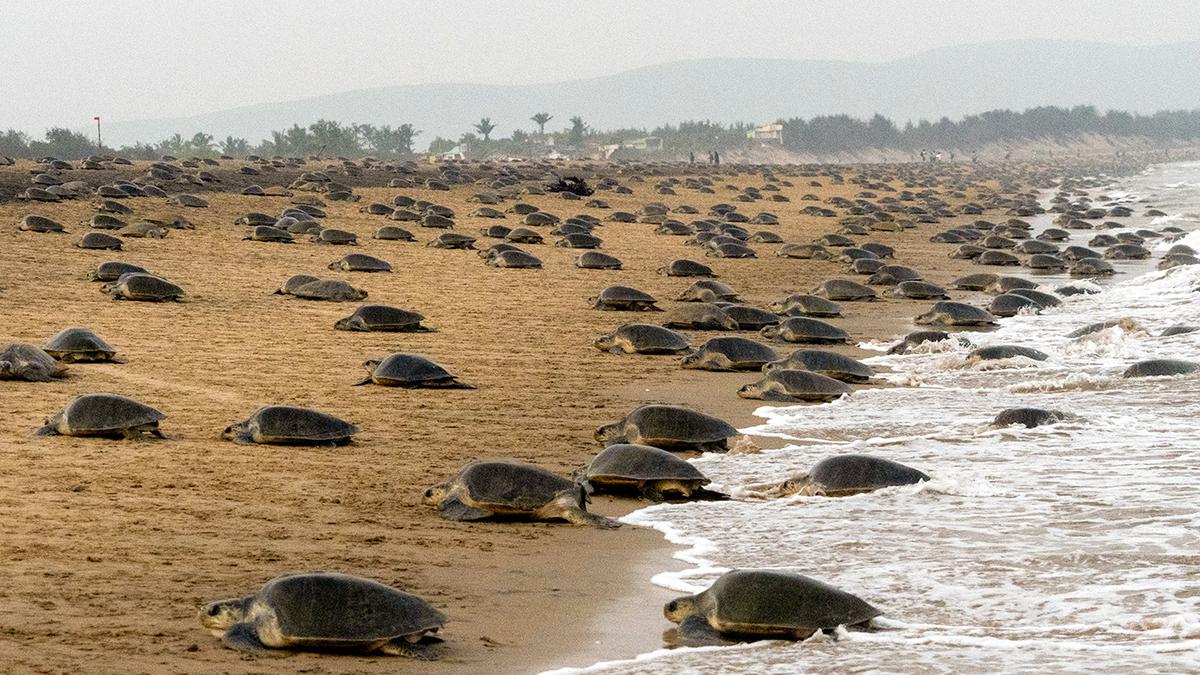
Threats
Olive ridley sea turtles face numerous threats, both natural and human-induced, that significantly impact their populations. One of the primary dangers is bycatch—the accidental capture of turtles in fishing gear such as trawls, longlines, gillnets, and purse seines. Bycatch often results in drowning or severe injuries from entanglement and swallowed hooks. Another major historical threat has been the direct harvesting of turtles and their eggs. Due to the turtles’ mass nesting behavior, thousands of eggs and nesting females were once easily collected for human consumption, leading to severe population declines. Although bans in some countries have helped reduce this issue, illegal poaching still occurs. Additionally, habitat loss from coastal development, shoreline hardening, and climate change-induced sea level rise has reduced available nesting sites. Artificial lighting near beaches further disrupts nesting females and disorients hatchlings, making their journey to the ocean more perilous.
Predation of eggs and hatchlings by both native and non-native animals, including feral pigs, birds, and crabs, poses another significant challenge. Vessel strikes are also a risk, especially for nesting females that migrate nearshore during the breeding season. Pollution, particularly marine debris, threatens olive ridleys as they may ingest or become entangled in discarded fishing gear, plastic waste, or oil spills. Climate change is an overarching threat that exacerbates many of these issues, from altering sand temperatures (which affect hatchling sex ratios) to destroying nesting beaches through rising seas and stronger storms. Additionally, warming ocean temperatures may disrupt food availability, forcing turtles to alter their migratory and foraging patterns. The combination of these threats highlights the urgent need for conservation efforts to protect olive ridley populations worldwide.
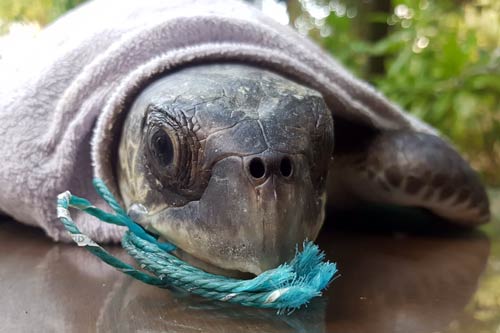
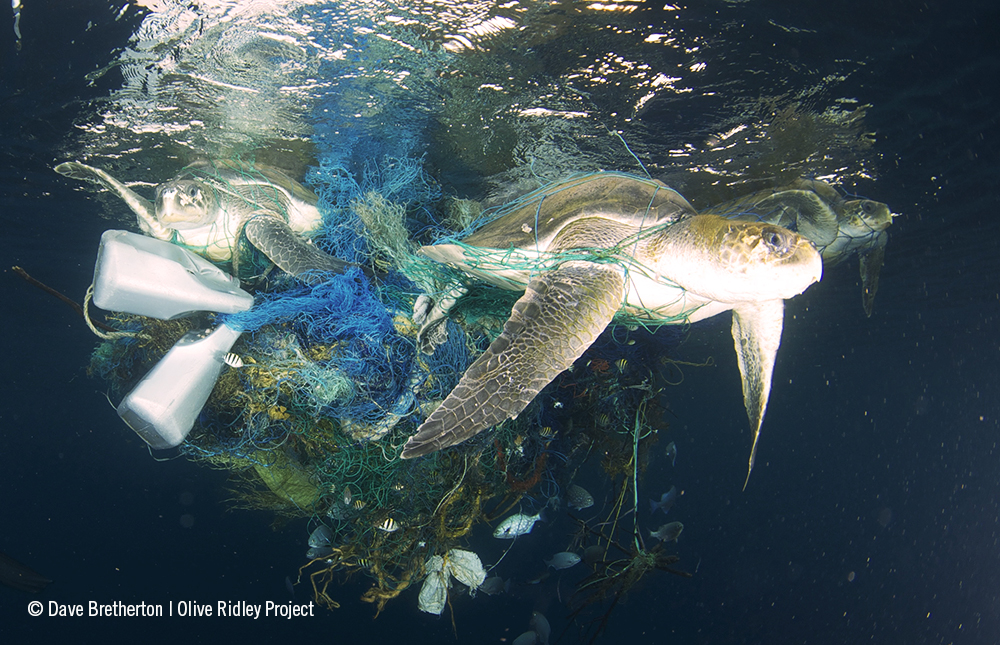
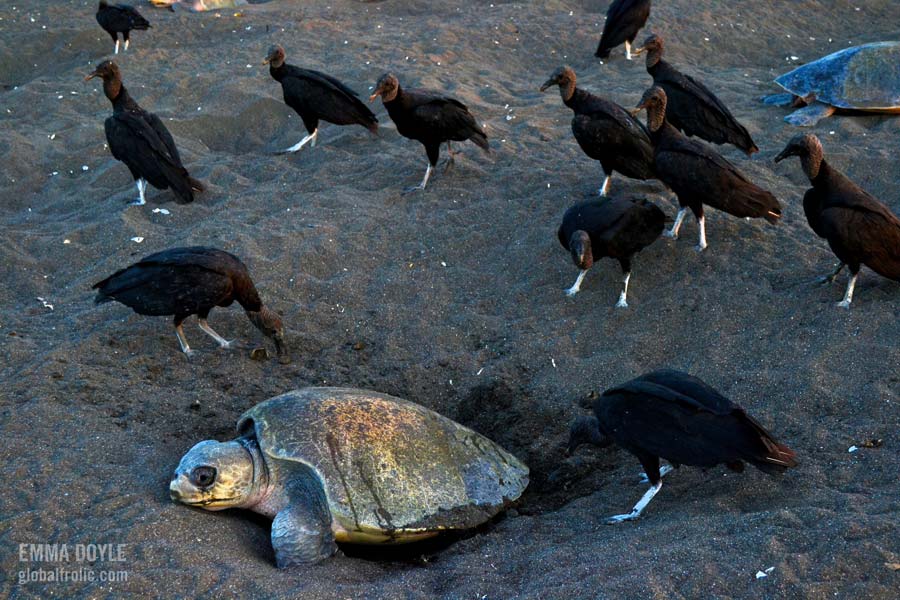
Olive ridley sea turtles are among the most fascinating and resilient marine creatures, with their vast migrations, synchronized nesting events, and ability to thrive in diverse ocean environments. Despite being the most abundant sea turtle species, they still face significant threats from bycatch, habitat destruction, climate change, and the illegal harvest of eggs and adults. Their survival depends on global conservation efforts, including protected nesting beaches, sustainable fishing practices, and public awareness campaigns.
By supporting conservation initiatives, reducing plastic pollution, and advocating for responsible coastal development, we can help ensure that olive ridley sea turtles continue to thrive for generations to come. Whether witnessing an arribada firsthand or simply learning more about these remarkable turtles, every effort counts in safeguarding their future in our oceans.
